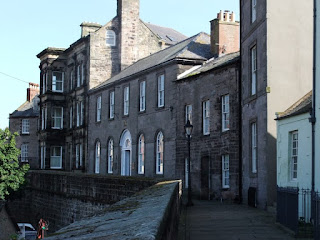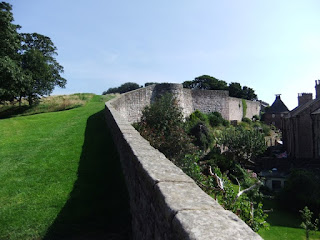Berwick's town walls were built in the early 14th century under Edward I, following his capture of the city from the Scots. When complete they stretched 2 miles (3.2 km) in length and were 3 feet 4 inches thick and up to 22-foot (6.7 m) high, protected by a number of smaller towers, up to 60-foot (18 m) tall. They were funded by a murage grant in 1313, a tax on particular goods imported into the town. By 1405, however, the walls had fallen into considerable disrepair and were incapable of preventing Henry IV from taking the town with relative ease.
Berwick Castle (an earlier structure) lay just outside the medieval wall to the north-west, and was connected to the town by a bridge leading to a gate in the wall.
An additional, short-lived, fort was built in 1552 to supplement the walls. By 1560, however, it was concluded that it was impractical to upgrade the existing walls and a new set of town fortifications in an Italian style were constructed instead, destroying much of the earlier medieval stonework. Sir Richard Lee served as Chief Surveyor for these works; he came up with an innovative design, combining ditches and walls backed by substantial earthworks (designed to absorb the force of an artillery attack). The new walls were much smaller in length, enclosing only two thirds of the medieval area, allowing them to include more artillery emplacements and five large stone bastions. The 16th century walls included four gates. In the 18th century most of the remaining parts of the medieval walls were steadily lost.
Description courtesy of Wikipedia.
16th August 2016
More Information:
- Wikipedia - Berwick Town Walls
- Historic England - The medieval and post-medieval fortifications at Berwick upon Tweed
- Co-Curate - Berwick Town Walls
See my other photos around Berwick:
































No comments:
Post a Comment